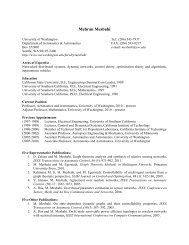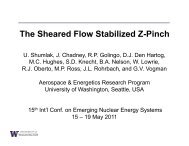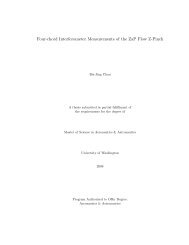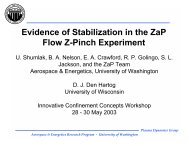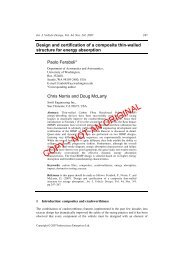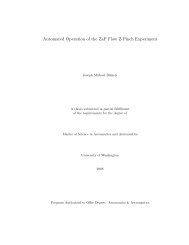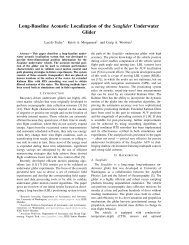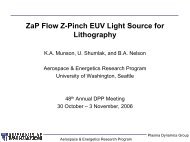Distributed Reactive Collision Avoidance - University of Washington
Distributed Reactive Collision Avoidance - University of Washington
Distributed Reactive Collision Avoidance - University of Washington
You also want an ePaper? Increase the reach of your titles
YUMPU automatically turns print PDFs into web optimized ePapers that Google loves.
30<br />
Figure 4.3: Example <strong>of</strong> a borderline case for five vehicles where no conflict-free constantspeed<br />
maneuver exists. The circle is the allowable set (radius ‖v i ‖) and the blue regions<br />
are the collision cones (shown with all equal velocities, <strong>of</strong> magnitude greater than ‖v i ‖).<br />
The allowable space for v ′ i is a disk, centered at the origin, <strong>of</strong> radius v i,max . The optimal<br />
solution to each region must lie on its boundary because the zero-cost point is not<br />
feasible (otherwise there would be no conflicts). This optimal solution must either be a<br />
vertex between two collision cones, the nearest point on a single collision cone, or the vertex<br />
between one collision cone and the edge <strong>of</strong> the allowable space. An example <strong>of</strong> this<br />
optimization is shown in Fig. 4.4.<br />
The first step <strong>of</strong> the algorithm is to compute each <strong>of</strong> the nearest points on each collision<br />
cone (there is a right and a left solution for each cone), which is v ′ i = ĉĉ T ṽ + v j . This<br />
list <strong>of</strong> points is checked to make sure each ‖v ′ i‖ ≤ v i,max . If this is not the case, then v ′ i is<br />
replaced with<br />
√<br />
v i ′ = v j − ĉĉ T v j ± ĉ (ĉ T v j ) 2 − vj Tv j + vi,max 2 , (4.11)<br />
where only the solution with the smaller ∆v i is kept. These points account for the only<br />
possible optima on the intersection <strong>of</strong> a cone and the edge <strong>of</strong> the space. Next, all <strong>of</strong> the twocone<br />
intersection points are found using linear equations (keeping only those with ‖v ′ i‖ ≤<br />
v i,max ). All <strong>of</strong> these points are ordered by increasing ∆v i and checked consecutively for



